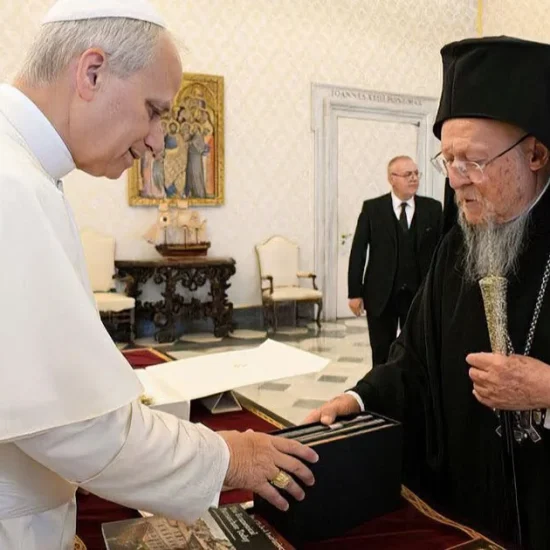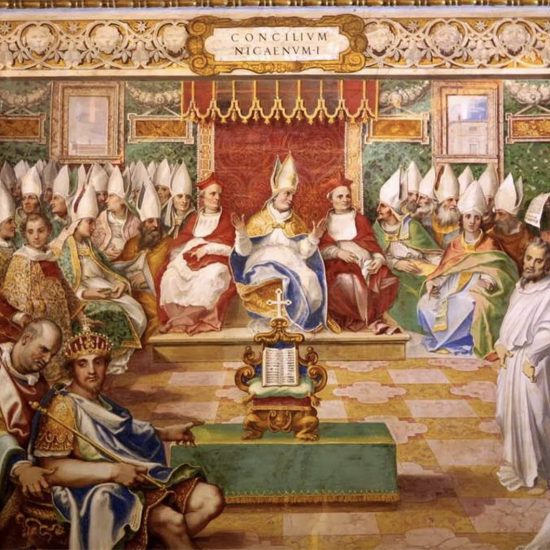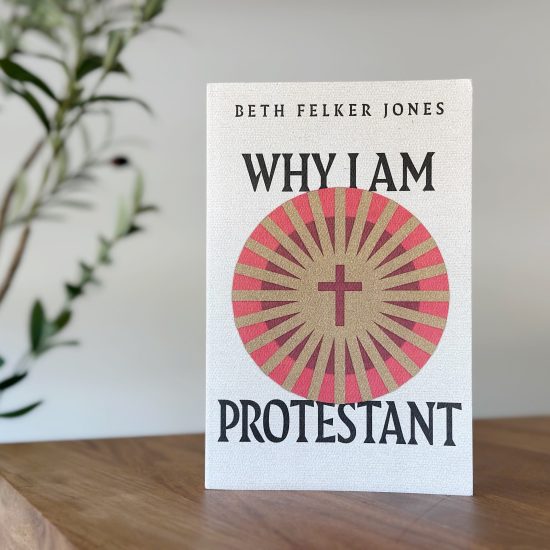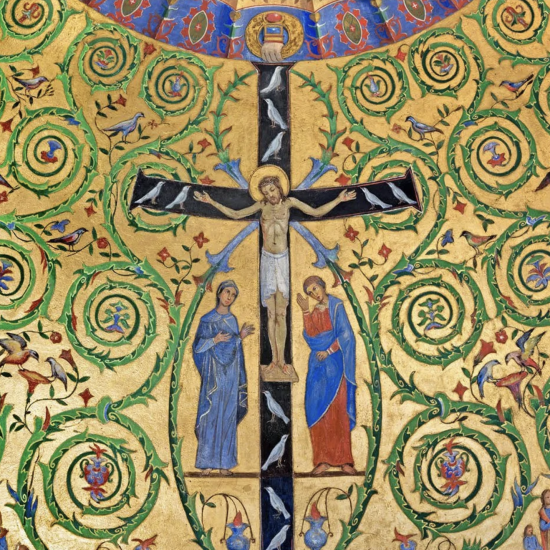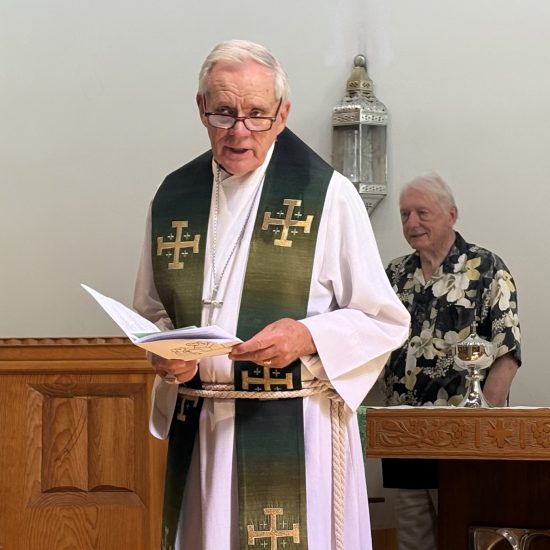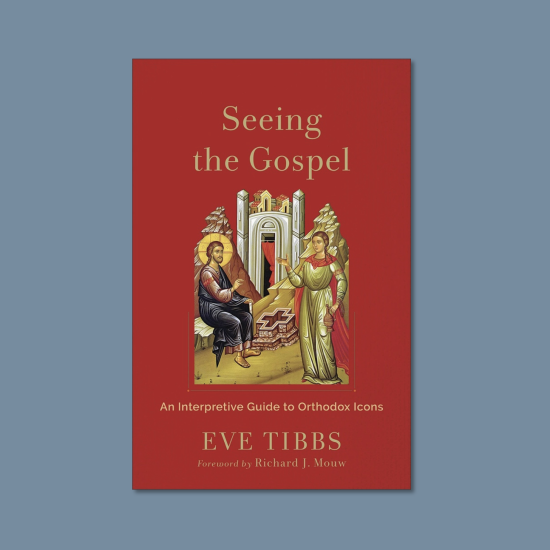

A VISIBLE UNITY: Cecil Robeck and the Work of Ecumenism. By Josiah Baker. Lanham, MD: Lexington Books/Fortress Academic, 2024. Xii + 264 pages.
According to the Gospel of John, on the night before his execution, Jesus prayed for his followers, asking the Father that his followers would be one, even as he was one with the Father (John 17). Unfortunately, history has demonstrated that this prayer has yet to be fulfilled. It did not take long for the emergent Christian community to divide up into various parties. These patterns of division continue to this day. Even if we might chalk these divisions to human nature, the brokenness experienced by the body of Christ is something to lament. It is also something that I believe Jesus calls us to overcome. One way that this can be accomplished is through ecumenical efforts. My own denomination (the Christian Church (Disciples of Christ) is the descendant of a nineteenth-century movement that prized Christian unity. Unfortunately, even this movement has experienced brokenness. One of the questions that gets raised in ecumenical circles is who should be included. What should be the criteria by which invitations are made? When it comes to who gets included, are there insiders and outsiders? As we seek an answer to these questions, we might want to consider the ecumenical methodologies involved in such efforts.

Robert D. Cornwall
Josiah Baker’s book A Visible Unity: Cecil Robeck and the Work of Ecumenism, seeks to answer some of these questions using the work of Cecil M. Robeck, better known as Mel, as a model. Baker’s book is the outgrowth of his PhD dissertation at Fuller Theological Seminary, where Mel Robeck was a longtime professor of church history and Ecumenics. Baker draws on Robeck’s life and ministry because for nearly forty years Robeck has been deeply engaged in ecumenical work representing one of the marginal movements to the traditional ecumenical networks. That movement, which is the fastest-growing Christian movement, is Pentecostalism.
In reviewing Baker’s book, which focuses on the work of Mel Robeck, I need to share my personal connection with the subject of this work. Mel Robeck was one of my seminary professors at Fuller during the early 1980s. I’ve known him for more than forty years. While my contact with him has been sporadic during the intervening years, we have this important connection that continues to this day. Additionally, I have Pentecostal connections, having spent several years of my youth and early twenties as a member of Foursquare churches. Therefore, I have a special interest in this book and its topic.
Baker’s thesis is that though the goal of ecumenism (unity) remains the same, the methodologies used by each generation of ecumenists must change and adapt to new situations. The message here is that the growth of Pentecostalism and its connections with the ecumenical movement, which have existed largely through the auspices of Mel Robeck’s efforts, must adapt as Pentecostalism becomes one of the largest movements of Christianity, especially globally. The issue here is not theological but methodological. Baker believes that participants in ecumenical efforts must discern praxis, with a focus on ecclesiological convergence. Baker explores the different ways that ecumenists go about their work, focusing on the ways that Robeck has participated in ecumenism, and as a result, pushing the ecumenical movement to better understand Pentecostals and include them in the larger ecumenical conversation. Baker also reveals throughout the book that Robeck found himself living between two entities, both of which were suspicious of the other. Leading ecumenists were not sure whether it was wise to include Pentecostals in their conversations, while Pentecostals had concerns about whether the Christianity represented by the ecumenical movement was true Christianity. Thus, Robeck was tasked with bridging two seemingly unbridgeable realities.
Baker does something interesting here in focusing on ecumenical methodology through a biographical study. He explores the different elements of ecumenical theology and practice, including the history of the ecumenical movement, but does so by focusing on the ecumenical work Robeck engaged in as a representative of Pentecostalism, such that new ecumenical methodologies emerged. Baker also focuses on Robeck because, like Robeck, he is a Pentecostal engaged in ecumenical work.
People interested in ecumenism will find this to be a unique and helpful study that takes the reader on a step-by-step journey through the work of ecumenists. In his first chapter, Baker explores “Robeck’s Ecclesiology amid Ecumenical and Pentecostal Conversations.” One of his key points in the book is that ecumenical work seeks ecclesiological convergence. With that in mind, it’s important to describe and define Robeck’s Pentecostal ecclesiology so as to have a base to engage in ecumenical conversations about such convergence. With that in mind, Baker writes that there are three dimensions to ecclesiology, as revealed in Robeck’s work, that reflect convergence. These are the church being a divine initiative, a historical community, and is an expression of the people of God. As for Pentecostalism’s contribution to the conversation, Baker points out that Pentecostalism is a restorationist movement that looks back to the church’s apostolic foundations. Pentecostalism is also a renewal movement, seeking to renew Christianity through the work of the Spirit.
Once Baker lays out Robeck’s Pentecostal ecclesiology in a context of ecumenical realities, he moves on in chapter 2 to a conversation about “Reconciling Memories of American Pentecostal Race Relations.” Here Baker notes that while the Azusa Street movement was integrated and led by an African American pastor, it soon divided along racial lines. In looking at this area of concern, which Robeck focused on, we see how the conversations within Pentecostalism connect with conversations within the ecumenical movement. The conversations within Pentecostalism led to the creation of intra-Pentecostal unity conversations, which created entities that could engage with the larger ecumenical world. It also led to the creation of new methodologies, including narrative ecclesiology. That is, telling the story, the history of a community.
Baker titles Chapter 3 “The Push to Expand the World Council of Churches.” Here the focus is on the efforts to connect Pentecostals with the World Council of Churches. He begins by speaking about the nature of conciliar ecclesiology. This involves faith communities gathering for worship and dialogue, and then working together “as an expression of the same Spirit” (p. 86). Thus, the Council is considered an expression of the unity of the church at this moment. The question then concerns the participation of Pentecostals in that conversation. While Robeck wasn’t the first Pentecostal to engage with the WCC, he has been perhaps the most important participant from the Pentecostal community, having been engaged with it since the 1980s when he was invited to join the Faith and Order Commission. Here again, we learn of efforts to create within Pentecostalism entities that could engage the ecumenical movement. As such, Robeck represented the movement rather than a denomination in several forums. These include the Faith and Order Commission, the Conference of the Secretaries of Christian World Communions, and other forms connected with the WCC. In looking at Robeck’s involvement in these entities we learn something about conciliar methodology.
Besides the conciliar efforts that Robeck has participated in, there are the “Bilateral Dialogues as a Communal Practice of Discernment” (Ch. 4). Here again Robeck was a leading participant in bilateral dialogues representing Pentecostal ecumenical interests, especially at the global level. Baker defines bilateral dialogue as “the formal process by which two church bodies deliberate through issues that divide them” (p. 117). A key dimension of this process is for the two parties to see themselves as equals. In this chapter, Baker introduces the reader to several Pentecostal bilateral conversations, all of which Robeck took a lead position. These include conversations with the Roman Catholic Church, the Lutheran World Federation, and the World Alliance of Reformed Churches. Again, these conversations involved global bodies rather than national denominations. While these conversations differ from, let’s say, the Disciples of Christ-Evangelical Lutheran Church of American Bilateral Dialog, which I serve as the Disciples co-chair, we learn something important about the nature and the challenges involved in this work. Once again, we are reminded that bilateral dialog is designed to advance, if possible, ecclesiological convergence. Success means both parties are enriched by the conversation.
In Chapter 5, Baker takes us on a different journey. This journey takes us to the “Patristic Roots and Charismatic Controversies of Spiritual Ecumenism.” Here Baker brings in Robeck’s interests as a historian of the early church and the controversies surrounding the development of the charismatic movement of the spirit within the non-Pentecostal Churches. The spiritual dimension is a focus on Christians sharing “a common gift of divine grace that transcends these other characteristics. The goal here is changing/renewing the churches such that they might experience unity through spiritual practices. The challenge here is that success requires that charisms of the Spirit important to Pentecostals are brought into the conversation without undermining traditional ecumenical methodologies.
Baker titles the final chapter of A Visible Unity “Testifying to Christ within Christian Forums.” Baker introduces us to a form of ecumenical work that is newer and broader than the traditional ecumenical efforts. The traditional ecumenical entities are largely composed of representatives of the Mainline Protestant churches and the Orthodox churches, while the Christian Forums movement brings more fully into the conversation non-aligned communities, including Pentecostals, Independent Churches, and the Roman Catholic Church. Robeck took a lead role in the development of this movement, with support from Konrad Raiser, General Secretary of the WCC. The key methodology that emerged from this movement emerged out of Pentecostalism. The methodology that is employed here is testimony, something that is highly regarded within Pentecostal circles. While this movement is new to me, I found it intriguing. Nevertheless, I was left with questions about its viability since it is a looser entity. Nevertheless, it brings together churches that might not be as active in traditional venues. The author of this study, Josiah Baker, along with Mel Robeck, has been a participant in this work, especially in the forum that exists in Southern California. While it is too early to discern where this experimental methodology will lead, it may have value. Nevertheless, as one might expect, some traditional ecumenists as well as members of the communities that have embraced the methodology, are suspicious about the movement and its purpose.
A Visible Unity not only focuses on the ecumenical work of Cecil (Mel) Robeck and the participation of Pentecostals in ecumenical efforts it focuses our attention on ecumenical methodology, something that most people probably don’t understand. Thus, in his conclusion, Baker lifts up the implications of the Pentecostal engagement with the ecumenical movement and its contributions to the development of new methodologies. I will focus on one statement in the conclusion that I think is key: Baker writes: “Member churches of a council precede the council itself. Churches foster conciliar relationships because these relationships occur prior to the churches’ membership in a conciliar body. Consequently, ecumenists ought not to assess churches by their ability to engage ecumenical methods but rather assess ecumenical methods by their ability to include churches as they presently exist. Otherwise, churches would not truly be primary actors” (p. 215). That is really the point of this book. How does the pursuit of Christian unity involve ecclesiological methods that include churches rather than exclude them? It is in large part the commitment of people like Robeck to this effort that has allowed Pentecostals to engage with the larger ecumenical world. He has done so with opposition from both within Pentecostalism and the ecumenical movement. But he persisted and change happened.
While A Visible Unity is a revised dissertation, and therefore reflects that orientation, I believe that it will serve well those who are concerned about the unity of the Christian community and its future. Some doubt the viability of the ecumenical movement, especially traditional forms. Robeck is not among them. The good news here is that new methodologies can be developed that can lead to new relationships. Since much of Robeck’s work has been at the global level, including the bilateral dialogs, we might want to know how these efforts be brought closer to national and even local conversations. Since most Pentecostal denominations are not focused on ecumenism, how might local and national dialogues extend the conversation? Baker doesn’t answer all our questions, but he does offer us a primer on what Pentecostal ecumenical engagement might look like going forward. Baker concludes his discussion of ecumenical methodology by suggesting that the job of ecumenists is to work themselves out of a job. Until that day comes, there is still work to be done in pursuit of convergence.
This review originally appeared on BobCornwall.com.
Robert D. Cornwall is an ordained minister in the Christian Church (Disciples of Christ). Now retired from his ministry at Central Woodward Christian Church (Disciples of Christ) of Troy, Michigan, he serves as Minister-at-Large in Troy. He holds a Ph.D. in Historical Theology from Fuller Theological Seminary and is the author of numerous books including his latest “Second Thoughts about the Second Coming: Understanding the End Times, Our Future, and Christian Hope” coauthored with Ronald J. Allen. His blog Ponderings on a Faith Journey can be found at www.bobcornwall.com.

